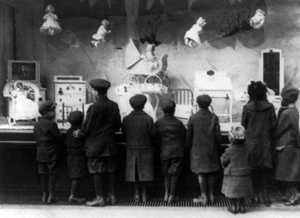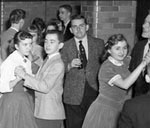 Teenagers today play a central role in American culture and society. They exist not only as high school students, but as closely watched consumers and trendsetters. Yet in 1900, teenagers did not exist. There were young people in their teens, but there was no distinct teenage culture.
Teenagers today play a central role in American culture and society. They exist not only as high school students, but as closely watched consumers and trendsetters. Yet in 1900, teenagers did not exist. There were young people in their teens, but there was no distinct teenage culture.
After 1900, reformers, educators, and legislators began to separate teens from adults and children through legislation and age-specific institutions, such as high school and juvenile courts. Between 1910 and 1930, enrollment in secondary schools increased almost 400 percent and the number of teens in school rose from 11% in 1901 to 71% in 1940. The percentage of African American teens remained lower, but also rose at a steady rate to more than 80% by the early 1950s.
During these decades, as teenagers began to develop a "teenage" culture, manufacturers, marketers, and retailers began to court high school students, especially girls, as consumers with distinct style preferences. Social scientists and parents engaged in an extensive dialogue over the nature of adolescence, high school, and the growing notion of "teenage" culture. Media also played an important role, often defining "teenager" as female.
For more on teenage and youth culture, see:
Children and Youth in History.
Joe Austin and Michael Nevin Willard, Generations of Youth: Youth Cultures and History in Twentieth-Century America (New York: NYU Press, 1998).
Sherrie Inness, ed., Delinquents and Debutantes: Twentieth-Century American Girls' Cultures (New York: New York University Press, 1998).
Grace Palladino, Teenagers: An American History (New York: Basic, 1996).
Kelly Schrum, Some Wore Bobby Sox: The Emergence of Teenage Girls' Culture, 1920-1945 (New York: Palgrave Macmillan, 2004).





 Teenagers today play a central role in American culture and society. They exist not only as high school students, but as closely watched consumers and trendsetters. Yet in 1900, teenagers did not exist. There were young people in their teens, but there was no distinct teenage culture.
Teenagers today play a central role in American culture and society. They exist not only as high school students, but as closely watched consumers and trendsetters. Yet in 1900, teenagers did not exist. There were young people in their teens, but there was no distinct teenage culture.
